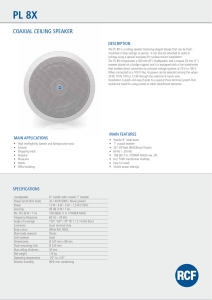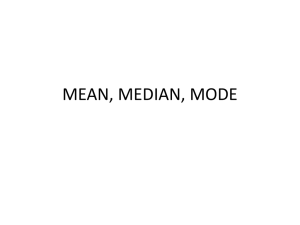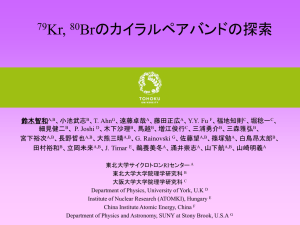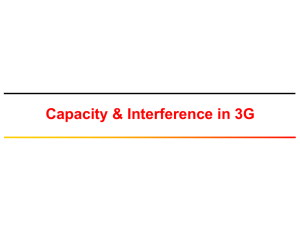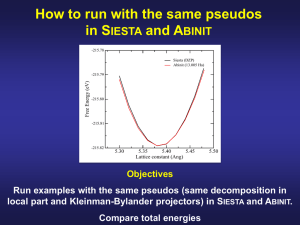sound spectrum
advertisement
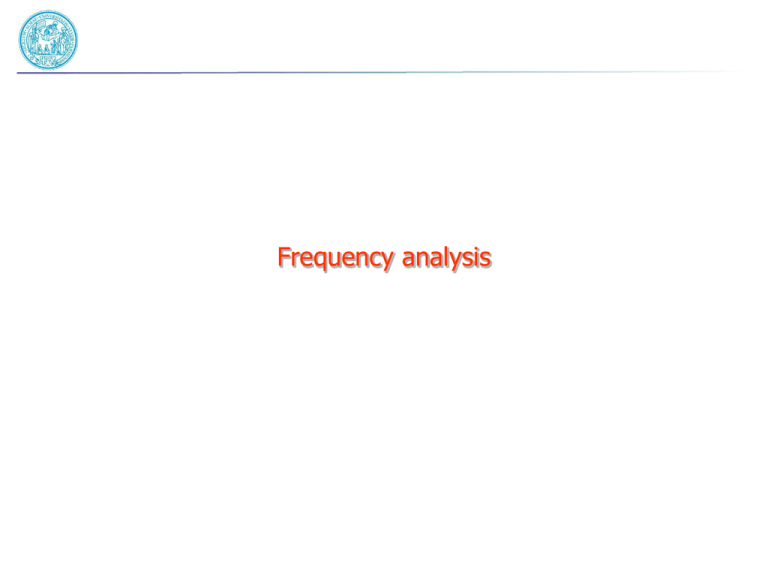
Frequency analysis Sound spectrum The sound spectrum is a chart of SPL vs frequency. Simple tones have spectra composed by just a small number of “spectral lines”, whilst complex sounds usually have a “continuous spectrum”. a) Pure tone b) Musical sound c) Wide-band noise d) “White noise” Time-domain waveform and spectrum: a) Sinusoidal waveform b) Periodic waveform c) Random waveform Analisi in bande di frequenza: A practical way of measuring a sound spectrum consist in employing a filter bank, which decomposes the original signal in a number of frequency bands. Each band is defined by two corner frequencies, named higher frequency fhi and lower frequency flo. Their difference is called the bandwidth Df. Two types of filterbanks are commonly employed for frequency analysis: • constant bandwidth (FFT); • constant percentage bandwidth (1/1 or 1/3 of octave). Constant bandwidth analysis: “narrow band”, constant bandwidth filterbank: • Df = fhi – flo = constant, for example 1 Hz, 10 Hz, etc. Provides a very sharp frequency resolution (thousands of bands), which makes it possible to detect very narrow pure tones and get their exact frequency. It is performed efficiently on a digital computer by means of a well known algorithm, called FFT (Fast Fourier Transform) Constant percentage bandwidth analysis: Also called “octave band analysis” • The bandwidth Df is a constant ratio of the center frequency of f c f hi f lo each band, which is defined as: • Df 1 0.707 fc 2 fhi = 2 flo 1/1 octave • Df 0.232 fc fhi= 2 1/3 flo 1/3 octave Widely employed for noise measurments. Typical filterbanks comprise 10 filters (octaves) or 30 filters (third-octaves), implemented with analog circuits or, nowadays, with IIR filters Nominal frequencies for octave and 1/3 octave bands: •1/1 octave bands •1/3 octave bands Octave and 1/3 octave spectra: •1/3 octave bands •1/1 octave bands Narrowband spectra: • Linear frequency axis • Logaritmic frequency axis White noise and pink noise • White Noise: Flat in a narrowband analysis • Pink Noise: flat in octave or 1/3 octave analysis Critical Bands (BARK): The Bark scale is a psychoacoustical scale proposed by Eberhard Zwicker in 1961. It is named after Heinrich Barkhausen who proposed the first subjective measurements of loudness Bark N. 1 2 3 4 5 6 7 8 9 10 11 12 13 14 15 16 17 18 19 20 21 22 23 24 Center freq. 50 150 250 350 450 570 700 840 1000 1170 1370 1600 1850 2150 2500 2900 3400 4000 4800 5800 7000 8500 10500 13500 LoFreq 0 100 200 300 400 510 630 770 920 1080 1270 1480 1720 2000 2320 2700 3150 3700 4400 5300 6400 7700 9500 12000 HiFreq 100 200 300 400 510 630 770 920 1080 1270 1480 1720 2000 2320 2700 3150 3700 4400 5300 6400 7700 9500 12000 15500 Bandwidth 100 100 100 100 110 120 140 150 160 190 210 240 280 320 380 450 550 700 900 1100 1300 1800 2500 3500 Third octave bands Terzi d'ottava N. 1 2 3 4 5 6 7 8 9 10 11 12 13 14 15 16 17 18 19 20 21 22 23 24 25 26 27 28 29 30 Center freq. 25 31.5 40 50 63 80 100 125 160 200 250 315 400 500 630 800 1000 1250 1600 2000 2500 3150 4000 5000 6300 8000 10000 12500 16000 20000 LoFreq 22 28 35 45 56 71 89 112 141 179 224 281 355 447 561 710 894 1118 1414 1789 2236 2806 3550 4472 5612 7099 8944 11180 14142 17889 HiFreq 28 35 45 56 71 89 112 141 179 224 281 355 447 561 710 894 1118 1414 1789 2236 2806 3550 4472 5612 7099 8944 11180 14142 17889 22361 Bandwidth 6 7 9 11 15 18 22 30 37 45 57 74 92 114 149 184 224 296 375 447 570 743 922 1140 1487 1845 2236 2962 3746 4472 Critical Bands (BARK): ampiezzeof di banda - Bark vs. 1/3 1/3 Octave Comparing theConfronto bandwidth Barks and octave bands 10000 Bandwidth (Hz) 1000 Barks Bark Terzi 100 1/3 octave bands 10 1 10 100 1000 Frequenza (Hz) 10000
